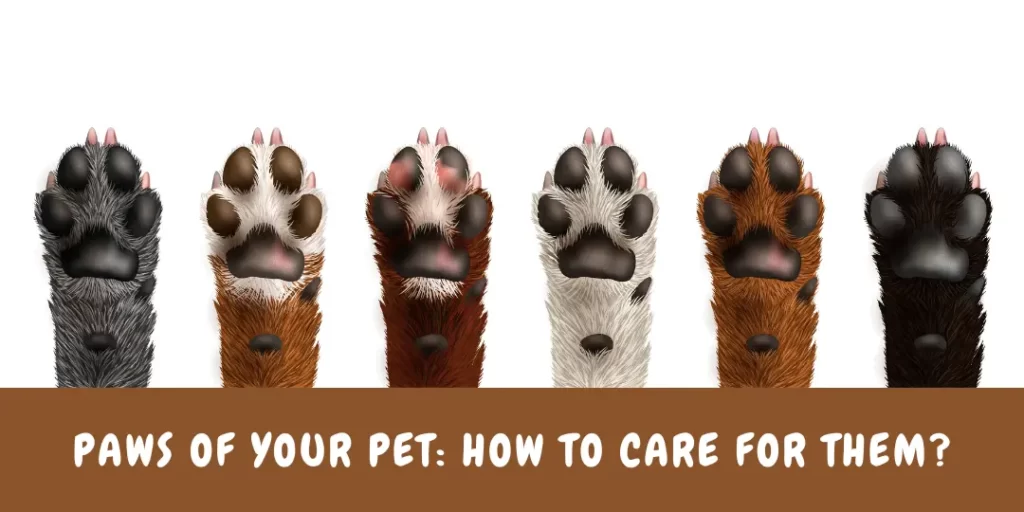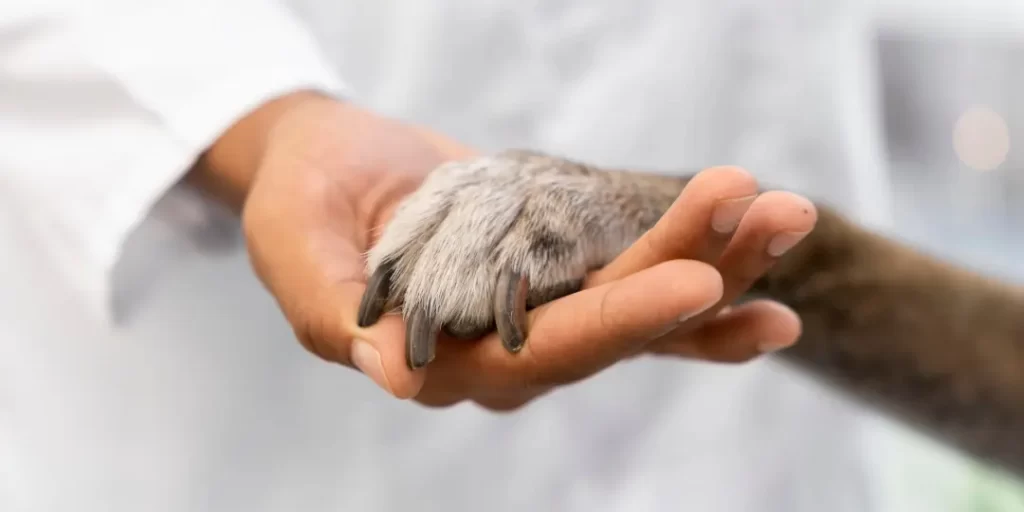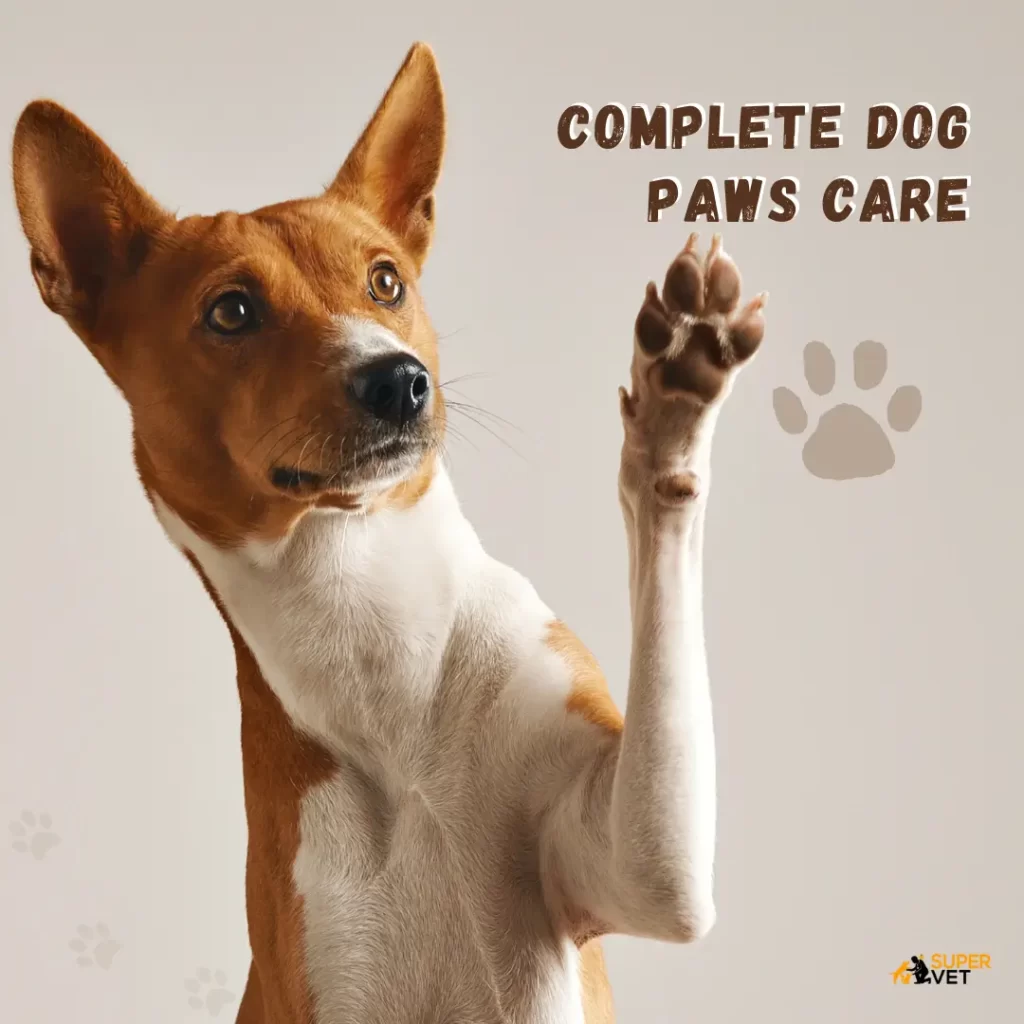A blog post on complete dog paws care.
If your dog’s paws are cracking and uncomfortable, it could quickly decrease in quality of life. Hot pavement, ice, snow, or overall wear can lead your pet to suffer from cracked pads.
It requires your attention and care, particularly in the cases of working dogs and sports dogs. You should remove all the irritations from a dog’s paws if their claws are clipped or cracked with an injury-care solution.
Maintaining a regular paw care routine with your dog can help to soothe and heal sore feet in your dog. we have listed some tips for how to take care of your Pet’s Paws.
HOW TO CARE FOR YOUR PET’S PAWS?:

1. Keep Paws Groomed:
Your pet needs grooming not only for skin and fur but also for their paws as well. Proper grooming also prevents injuries or discomfort. It also keeps your pet’s paws feeling most pleasing.
You just need to do the following steps:
- keep nails trimmed
- Trim hair to the same height as their paw pads
- Remove debris from paw pads and clean them properly
- Rub gently between paw pads and massage in a circular motion with your thumb on the back of the paw
2. Moisturize Paws with paw wax
If the paw pad gets dry, it will crack and bleed. You just need to moisturize your pet’s paw pad on daily basis. Paw wax can be applied easily and also moisturize their paw. It will save your dog’s foot from ice, salt, and dirt. It also helps in protecting your dog’s paw pad from burns when they are doing outdoor activities.
Winter is the peak time for dry skin, so moisturizing your dog’s paw pads may help them avoid winter-weary feet. You can also apply plant-based claw wax on the bottoms of your dog’s paws to keep them safe from chemicals and to help keep them from getting cracks caused by the icy, snowy conditions.
Do not put human lotion on dog pads, however, as this may soften the pads too much, leading to even greater problems.
3. Wear Shoes
Dog boots are another good option for protecting the delicate pads of your dog’s feet, and most of them work well for snow as well as in extreme heat.
In summer pets’ paws feel the same heat as we humans do on the bottom of their feet. You can help your pet to avoid blistering and burning while walking on hot surfaces with boots.
4. Wash Paws
Regularly wash any injuries with antibacterial soaps or dilute betadine, dry thoroughly, then use a Paw Soother to speed up healing.
A quick swab with a super-absorbent microfiber towel can help dry clean, yet damp, feet, as well as keep your dog from sliding around on hardwood floors.
5. Practice first-Aid for paws

Because your dog uses his feet all the time, any injuries to his feet or paw pads can progress fairly quickly through irritation or infection. Injured paw pads can cause pain when walking, and can be infected, and mats between the toes may cause walking problems, or various skin problems if your dog is licking at them.
Cracked dog’s paws can generally be repaired at home, but if the paws of your dog’s cracked feet are so bad they are painful, then seeing a veterinarian may be best.
If you see any cut or cracked dog paws, you have to irrigate the affected area with a wound care solution to clear away irritants. Later, spread an antimicrobial hydrogel to relieve the area and elevate recovery. You can also bandage the area to stop any further damage to the paws.
Final Words
Cleaning a dog’s feet is a good chance to check for cuts, scratches, or dry, cracked pads. If you perform a paw check and notice your dog’s feet are cracked, you may want to try applying veterinarian-approved foot balm to his feet.
Supervet offers different variety of products for your pet to improve their health.
Fortunately, our veterinarian can help determine the cause and assist in caring for cracked paws by suggesting creams, and ointments, and keeping these feet clean whenever possible. Even healthy dogs may occasionally develop cracked paw pads, depending on many factors.

